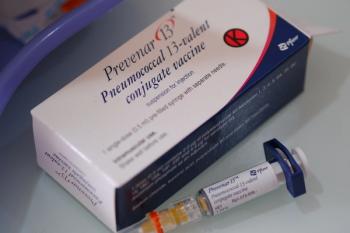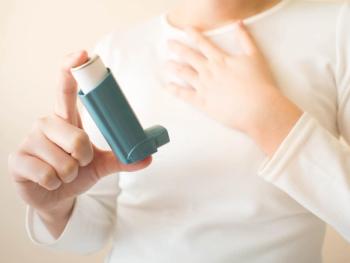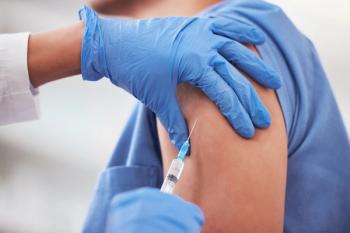
Post-Pandemic Effects of COVID-19 on Pediatric Respiratory Infection Epidemiology
Nonpharmaceutical interventions used during the COVID-19 pandemic may have affected the current epidemiology of respiratory infections in pediatric patients.
Following the COVID-19 pandemic, trends in acute respiratory infections (ARIs) among pediatric populations have varied, suggesting associations between stringent nonpharmaceutical interventions (NPIs) and ARIs, according to study results published in Paediatric Respiratory Reviews.1
Despite the low risk of severe disease and mortality associated with COVID-19 infection in children, the benefits of shielding children from infection are still often debated. While restrictions during the pandemic had significant effects on the epidemiology and burden of respiratory infections in pediatric populations, their implications on future outcomes are still not fully understood.
To address these knowledge gaps, a team of investigators in Australia aimed to determine possible direct influences of the COVID-19 pandemic on the epidemiology of non-SARS-CoV-2 respiratory infections in pediatric populations. They also aimed to explore potential mechanisms for altered epidemiology, as well as to address some possible indirect impacts of the COVID-19 pandemic on ARIs, as in health care services and vaccinations.
One of the first published assessments of reduced respiratory infection rates among pediatric patients during the COVID-19 pandemic, from Australia, suggested that the introduction of strict NPIs during stay-at-home orders and border closures was associated with a significant reduction in respiratory syncytial virus (RSV) rates, which had a typical seasonal onset around March. From April to June 2020, noted to be the typical peak RSV period, the mean frequency of RSV detection was reduced by 94.3% compared with rates from 2015 to 2019. Similarly, bronchiolitis admissions were reduced by 89.1%.
“The near complete suppression of RSV season was soon reflected in reports from other regions in the southern hemisphere including Brazil, New Zealand, and South Africa, and subsequently the northern hemisphere for the 2020-2021 RSV season,” the authors of the current study noted. When NPIs eased, most regions noted a sharp unseasonal resurgence of RSV disease indicators with a shift in the average infection among older children.
Similar to RSV trends, the reduction of seasonal influenza epidemics during the 2020 influenza season in the southern hemisphere was aligned with the introduction of NPIs. While many countries experiences a slow rise to the prepandemic influenza rates, interseasonal outbreaks were observed in several countries that relaxed NPI mandates.
Other respiratory viral infections showed variation in how NPIs affected their epidemiology during the COVID-19 pandemic. Human metapneumovirus and endemic coronaviruses had similar trends to those of RSV and influenza virus epidemiology during the use of NPIs with suppressed detection in the early months of the pandemic. Parainfluenza virus detection was more variable. A resurgence of human metapneumovirus and parainfluenza virus was noted with the easing of NPI; however, endemic coronavirus infections were more variable. The authors noted that “nonenveloped viruses, rhinovirus and adenovirus, appeared less affected by NPI use and when decreases were observed, they rebounded more rapidly than seen with other viruses.” This is likely due to their persistence in the environment and easy transmissibility through contact and fomites. “So, the type and stringency of NPI application as well as viral characteristics themselves appear to have impacted on timing and scale of suppression and resurgence,” the investigators noted.
Bacterial respiratory infections were also reduced with strict NPI use. Infections caused by S. pneumoniae and H. influenzae were reduced in 26 countries during the use of NPI, with resurgence in S. pneumoniae-related infections being reported following the easing of NPI use.
Many mechanisms have been hypothesized to have led to the varying trends in viral and bacterial respiratory infections in pediatric populations. One such mechanism is the differential effects of NPI on different viruses, as noted with virulent characteristics that vary between different classes of viruses (i.e., enveloped vs nonenveloped viruses).
Another mechanism that has been hypothesized as a factor is that of immunity debt or gap, which suggests that first and future antigenic exposures may create a lack of immunity at a population level in younger children and waned immunity in older children and adults. These trends are often misunderstood and still unclear. Changes in viral-bacterial interactions, invasive bacterial disease, and variation in viral diversity have also been potential mechanisms that are hypothesized to have affected resurgence trends.
Aside from changes in epidemiology, the COVID-19 pandemic has also indirectly impacted childhood respiratory infections and increased the burden of these infections.
“Important themes include disruption to routine child health services, reduced vaccination coverage for important respiratory pathogens, and impacts on critical respiratory infection surveillance and research,” the authors noted. “In addition to re-establishing vaccination programs and child health services, advances in the development of maternal RSV vaccines and next generation monoclonal antibody immunoprophylaxis for RSV show promise in reducing this burden into the future.”
The COVID-19 pandemic raised awareness about gaps and opportunities to prevent and treat pediatric respiratory infections. Access to vaccines, oxygen, and antibiotics is essential for this patient population and should be prioritized and available during pandemics. The current lack of clinical guidelines on the diagnostic testing of respiratory pathogens is also a knowledge gap that needs to be addressed. Testing may provide proper guidance on clinical management and treatment of such respiratory illness, as well as provide the mapwork for surveillance systems in critical respiratory infections such as in measles or tuberculosis.
“Indirect impacts related to the health system disruption confer immediate and long-term implications for addressing the burden of pediatric respiratory infections,” the authors noted. “[Low- and middle-income] countries have been disproportionately impacted, which has amplified existing inequities and threatens gains made in recent decades. A post pandemic refocus on the prevention of respiratory infections for all children is needed and can leverage learnings and innovations realized during the COVID-19 pandemic,” concluded the investigators.
Reference
1. Burrell R, Saravanos G, Britton PN. Unintended impacts of COVID-19 on the epidemiology and burden of paediatric respiratory infections. Paediatr Respir Rev. Published online August 3, 2023. doi:10.1016/j.prrv.2023.07.004
Newsletter
Pharmacy practice is always changing. Stay ahead of the curve with the Drug Topics newsletter and get the latest drug information, industry trends, and patient care tips.































































































































